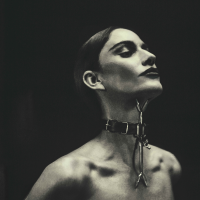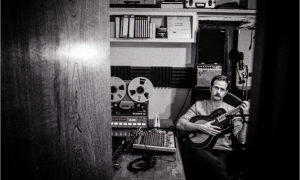1957 was a pivotal year in the lives and careers of both Thelonious Monk and John Coltrane. For Monk, 1957 began auspiciously. For several years the pianist had been unable to perform in New York City's clubs and concert halls due to the loss of his cabaret card, but with the help of his manager Harry Colomby and the patroness Nica de Koenigswarter, he regained his card early that year, and immediately began working again around town.
Monk had been on the verge of a breakthrough since 1955. Having been instrumental in the birth of bebop as the house pianist at the Harlem club Minton's Playhouse, as well as playing in the bands of Charlie Parker and Dizzy Gillespie, Monk was given his first opportunity to make his own records as a leader by Alfred Lion of Blue Note Records in 1946. After making a series of early recordings for Blue Note and then Prestige, he began to reach a wider audience upon his move to Riverside in 1955.
However, due to his inability to perform in New York during that time period, and his unwillingness to travel, mainstream recognition was still out of reach. So, upon the return of his cabaret card in 1957, Monk wasted no time in getting back on track. His first gig was an open-ended engagement at the Five Spot Café in the East Village for which he hired a quartet that included the tenor saxophonist John Coltrane.
For Coltrane, 1957 began with the lowest point of his career. He had been lifted from obscurity two years previous when Miles Davis hired him into his quintet, but by late-1956 Coltrane's heroin addiction had started to interfere with his performance. After several warnings, Davis finally ran out of patience, and in April 1957 fired the saxophonist for his unreliability. Having squandered his best job to-date, he returned home to Philadelphia, and in May he kicked his addiction cold turkey. Years later, Coltrane would also describe this as a moment of spiritual reawakening, a path that would ultimately lead to perhaps his greatest achievement, A Love Supreme. And so it was with a renewed spirit and dedication that Coltrane returned to New York in the late-Spring / early-Summer of 1957, began attending Monk's informal workshops at his apartment, and eventually joined Monk's quartet at the Five Spot in late July.
The Five Spot engagement was a triumph. The club was packed with lines around the block every night of what would become a five-month engagement. Monk was finally given the recognition that he long deserved, and Coltrane, inspired by Monk's music and pedagogy, began developing at an astounding rate. “My time with Monk brought me into association with a supreme architect of music," Coltrane said in a DownBeat article. Coltrane also made his first great record, Blue Train, for Blue Note Records in September 1957, just two months before the Carnegie Hall concert.
Which brings us to November 29, 1957. Monk and Coltrane had been working together for a solid four months by the time they set foot on stage at Carnegie Hall that night. By all accounts, Coltrane had been tentative early on in the Five Spot run, challenged at first by Monk's quirky melodies and chord changes, but the 51 minutes of music captured in pristine sound quality on Live at Carnegie Hall present the quartet, which was completed by bassist Ahmed Abdul-Malik and drummer Shadow Wilson, at the height of their powers.
The quartet performed two short sets, with the repertoire largely culled from Monk's book. The first set consists of “Monk's Mood," “Evidence," “Crepuscule with Nellie," “Nutty" and “Epistrophy." The second set they stretched out a bit more, opening with “Bye-Ya," followed by the sole standard “Sweet & Lovely," “Blue Monk" and closing with an incomplete second-take of “Epistrophy" that ends when the tape runs out.
The concert, which was a benefit for the Morningside Community Center in Harlem, boasted a jaw-dropping line-up of artists that also included Billie Holiday, Dizzy Gillespie, Ray Charles, Chet Baker with Zoot Sims, and Sonny Rollins, and was recorded for a later broadcast overseas by Voice of America.
The month after the Carnegie Hall concert the Five Spot run finally came to an end, Coltrane left Monk's quartet ignited from that spark of creativity, and proceeded to change the face of jazz over the remaining ten years of his life, at first reuniting with Miles Davis to create such landmark recordings as Round About Midnight and Kind of Blue, and then creating his own landmarks such as Giant Steps and A Love Supreme, the latter with his own classic quartet featuring McCoy Tyner, Jimmy Garrison and Elvin Jones. Monk's star also continued to rise. The pianist eventually found another tenor saxophonist that could embody his music in the person of Charlie Rouse, went to sign with powerhouse label Columbia Records, and grace the cover of TIME magazine.
The tapes from that evening at Carnegie Hall were inadequately labeled, filed away amongst the Voice of America's vast collection of recordings, and apparently forgotten until January 2005 when Larry Appelbaum, a supervisor and jazz specialist at the Library of Congress, came upon them by chance during the routine process of digitally transferring the Library's collection for preservation purposes. Appelbaum noticed a set of tapes simply labeled “sp. Event 11/29/57 carnegie jazz concert (#1)," with one of the tapes barring the sole marking “T. Monk." All of the evening's performances, with the sole exception of Billie Holiday's performances were present in the set.
Until now, remarkably little recorded documentation of Monk's quartet with Coltrane has been known to exist, a fact that makes this finding all the more significant. The quartet did record three tracks in the studio for Riverside over the summer of 1957, “Ruby My Dear," “Trinkle, Tinkle" and “Nutty," which were released on Thelonious Monk with John Coltrane, and in 1993, Blue Note released an amateur recording, titled Live at the Five Spot-Discovery!, which was taken from Naima Coltrane's (John's wife at the time) handheld recording device of Monk's quartet in September 1958 after Coltrane had left the band but returned temporarily to fill in for tenor saxophonist Johnny Griffin.
For more information contact All About Jazz.



























